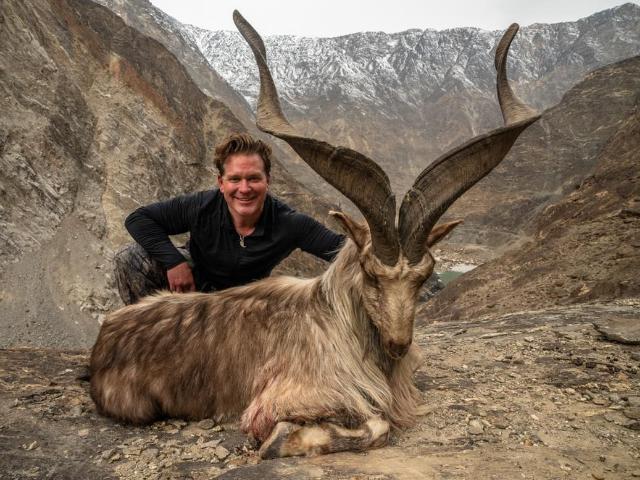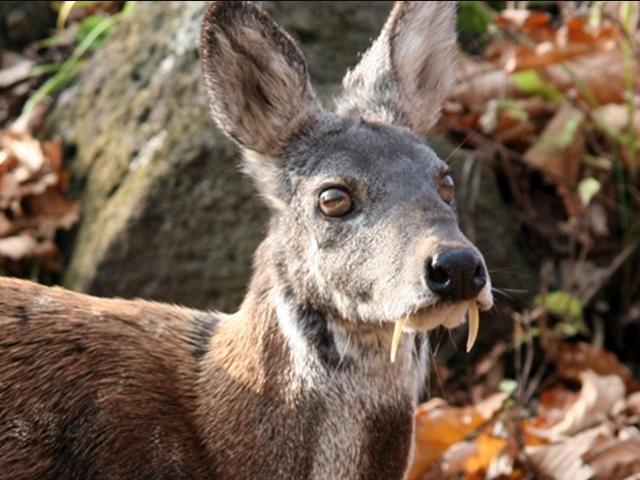Deforestation in the shadow of the gun is rather deep-rooted in Kashmir where eruption of militant movement witnessed an ecological anarchy. In the menacing shadow of militancy, illegal felling flourished .Conservative estimates say that over 100,000 trees were illegally felled from the jungle peripheries of Arizal, Chrar Sharief, Shopian, Tral and Kupwara in the first three years of militancy. Kalashnikov-toting militants threatened forest officials and locals as the forests were vandalized. "People are killed; who is bothered about forests?, said officials. Midst militancy, there was a period in Kashmir valley when an animal had raised hopes of silencing the booming guns. Yes, an animal. There were efforts to hold a peace pact with Pakistan to save Markhor, killed in cross firing at LoC. Surrounded in coniferous forests dotted with deodar trees and located along the Line of Control (LoC), Kazinag national park in north Kashmir’s Boniyar sector is the home to the Markhors, also a national animal of Pakistan.
Only Peace Can Save Markhor
Markhor has been listed on the IUCN Red List as Near Threatened since 2015. There was a time when “there were talks to hold a peace pact between two nations to save Markhor from extinction”. “The peace talk was for the animal so as to save it from cross-border shelling.” However, Pakistan chose to run a “trophy hunting “ programme to save the animal. Every year hunting of some animals in the Pak occupied Kashmir is allowed with exorbitant price- atleast 75000 US dollars per head- and some of the money is distributed among the local communities for conservation work. But on this side of the border, scientists want to save the animal through research work. A major problem is that LoC has fragmented the markhor habitat. As a result, many sensitive areas are out of bounds even for wildlife officials. Scientifically known as Capra falconerii, its common name Markhor derived from Persian language signifies serpentine twisted horn morphology.
Also read: Kashmir Forests Cry:Wildlife Inches Towards Extinction
In the concluding part of special series on the World Environment Day , we talk more about the Kashmir's wildlife crisis. The threatened markhor has unique majestic spirally twisted horns, flowing beard and unique stamina to scale precipitous mountain cliffs and gorges and tide over freezing winter in mountain caves surviving by eating twigs and foliage of palatable bushes and trees. It is restricted in two areas: The Kajinang national park in Baramulla district close to the line of control and Hirpora wildlife sanctuary in Shopian district in the northern slope at the Pir Panjal range.” We are doing our best to save the animal”, said Intesar Suhail, wildlife warden of Shopian. Besides insurgency, poaching and over grazing are threatening the majestic goat. The Indian Army, which is also a stakeholder in Markhor conservation, is being sensitized through workshops and other interactions. The Wildlife Trust of India in a survey in 2005 carried out a massive conservation project sensitizing both the communities and the men in uniform.
Also read: Rumble In The Jungle:Bear Takes On Tiger
The mountain goat’s habitat ranges over the north-western parts of the Hindu Kush Himalayas, in Uzbekistan, Turkmenistan, Tajikistan, Afghanistan, Pakistan and India. The Markhor is officially protected under the Jammu and Kashmir Wildlife Protection Act. But it remains highly threatened due to ill-planned development projects, overgrazing by domestic animals, laying of electricity transmission lines, poaching and fragmentation of its habitat due to fencing along the border between India and Pakistan. This fragmentation has led to inbreeding on both sides.
Fragrance of Musk Attracts Poachers Too
The Kashmir musk deer (Moschus cupreus) is a highly endangered species and one of the heavily hunted mounted ungulates for the sac of musk .Male deer , with tusks,have a scent sac or pod which becomes active when they are about two years old. This sac secretes a substance known as musk; the stag uses it to mark his territory and to attract females. Each musk pod weighs about 15 gm. The deer is already threatened because of habitat fragmentation and poaching for the illegal trade of musk pod which is used to produce perfumes and traditional medicines in China and east Asia, said World Wildlife Fund in a report . This is also one of the species in the region which is also impacted by the insurgency. The direct impact is that the “conservation issues take a back seat,” a wildlife expert said.” “ In fact the presence of forces in the forests have both positive and negative impacts”, another officer explained , “ their presence means poachers would not enter but the army men presence mean you can’t move in to carry out conservation and research works.”
Also read: Frame By Frame: Tigers Fight In Kanha National Park
Their habitat is impacted by livestock grazing, other anthropogenic and developmental activities. This species was originally described as a subspecies to the alpine musk deer, but is now classified as a separate species. The deer stand at 60 cm tall, and only males have tusks and they use them during mating season to compete for females. The Kashmir musk deer, which is one of seven similar species found throughout Asia. Several musk deer species are in great need of conservation action. The Kashmir musk deer is an endangered species of musk deer native to Afghanistan, India, and Pakistan. Recent studies have shown that the species is also native to western Nepal




Comments
Post a Comment